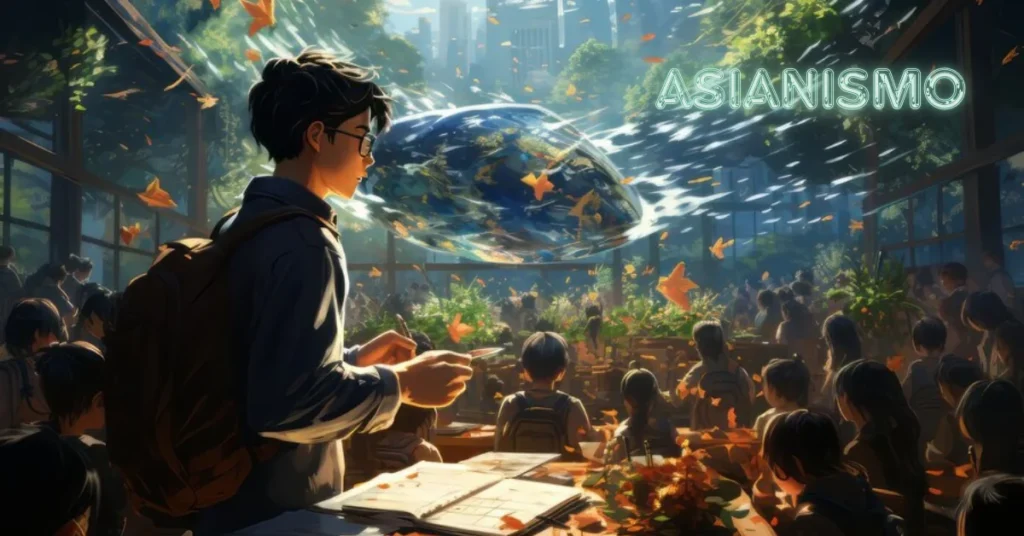Introduction to Asianismo
Asianismo is more than just a term; it represents a vibrant tapestry of cultural influences that has woven its way into the fabric of societies around the globe. This phenomenon encapsulates the fascination with and appreciation for Asian cultures, traditions, and philosophies. As globalization continues to blur geographical boundaries, Asianismo invites us to explore how these rich cultures impact our daily lives.
From cuisine to fashion, music to spirituality, Asianismo resonates in various forms across different regions. It’s not merely about adopting styles or trends; it’s about embracing an intricate blend of history and modernity that shapes identities worldwide. Join us as we embark on a journey through this captivating concept, unveiling its origins, spread, and enduring significance in contemporary society.
The History and Origins of Asianismo
Asianismo has its roots deeply intertwined with the cultural exchanges that occurred throughout history. Emerging in the late 19th and early 20th centuries, it reflects a growing appreciation for Asian traditions, philosophies, and aesthetics.
Originally, this movement gained traction as Western artists and thinkers began to explore Eastern influences. The fascination was not merely superficial but delved into spiritual and intellectual realms.
Japan’s Meiji Restoration played a significant role by opening up to the world. Subsequently, European artists were inspired by Japanese woodblock prints and Zen philosophy. This spark ignited a broader interest across Europe and America.
As globalization progressed, Asian cultures began influencing various aspects of life in different regions. From art to fashion, these exchanges paved the way for modern interpretations of traditional practices within diverse societies around the globe.
The Spread of Asianismo in Different Parts of the World
Asianismo has woven itself into various cultures around the globe, transcending geographical boundaries. From Latin America to Europe, its influence is palpable.
In countries like Brazil and Mexico, Asianismo manifests through culinary traditions. Sushi bars and dim sum restaurants have become staples in urban centers. These dishes reflect a fusion of flavors that resonate with local palates.
Meanwhile, in Western nations such as the United States and Canada, Asian cultural festivals attract diverse crowds every year. Events celebrating Lunar New Year or Diwali showcase traditional performances and crafts. This synergy creates appreciation for varied customs.
Asia’s rich spiritual practices also find a home abroad. Yoga studios and meditation centers flourish everywhere, promoting wellness inspired by Eastern philosophies.
As communities embrace these elements of Asianismo, they cultivate an enriched understanding of global interconnectivity through shared experiences. Each region adapts aspects uniquely while contributing to this vibrant tapestry of culture.
Impact on Popular Culture
Asianismo has significantly influenced popular culture, shaping everything from music to fashion. The vibrant aesthetics and philosophies have permeated various artistic expressions. Artists often draw inspiration from traditional Asian motifs and ideologies.
In music, genres like K-pop blend Western pop elements with rich cultural narratives. This fusion not only showcases talent but also introduces global audiences to Asian storytelling traditions.
Films like “Crazy Rich Asians” challenge stereotypes while celebrating diverse identities. They highlight the growing demand for authentic representation in cinema.
Fashion trends increasingly reflect Asian influences as well, with designers incorporating intricate patterns and heritage fabrics into modern styles. Social media amplifies these trends further, allowing creators to reach vast audiences effortlessly.
The impact of Asianismo reflects a broader appreciation for multiculturalism in today’s society, inspiring new generations to explore and embrace different cultural heritages through entertainment.
Representation in Art and Media
Art and media play a pivotal role in shaping perceptions of Asianismo. They serve as mirrors reflecting diverse cultural narratives.
Film, music, and visual arts often incorporate themes from various Asian cultures. This representation can celebrate rich traditions or sometimes perpetuate stereotypes.
Take cinema, for instance. While films like “Parasite” showcase authentic stories from Korea, others may fall into the trap of clichéd portrayals. The challenge lies in balancing visibility with authenticity.
In contemporary art, artists blend traditional techniques with modern influences to express their identity. These works invite dialogue about heritage while challenging preconceived notions.
Social media platforms further amplify these voices. Creators use digital spaces to share unique perspectives on what it means to embrace Asianismo today.
Through this vibrant interplay between culture and expression, audiences gain deeper insights into the complexities of Asian identities across the globe.
Criticism and Controversies Surrounding Asianismo
Asianismo, while celebrated for its cultural richness, has faced considerable criticism. Detractors argue that it often romanticizes Asian cultures, reducing them to stereotypes. This oversimplification can dilute the complexity of diverse traditions.
Additionally, some claim that Asianismo can lead to cultural appropriation. When elements of a culture are adopted without understanding their significance, it raises ethical questions about respect and authenticity.
There is also concern about the commercialization of Asian practices and aesthetics. As these elements become trendy in Western contexts, they may lose their original meaning and purpose.
Activists voice worries that such trends overshadow authentic voices from within those communities. The focus might shift away from genuine representation toward profit-driven narratives.
These controversies highlight the delicate balance between appreciation and exploitation in intercultural exchange. Awareness is crucial as society navigates this intricate landscape.
The Future of Asianismo and Its Significance in Today’s Society
The future of Asianismo is poised for evolution. As globalization continues to intertwine cultures, it becomes a powerful vehicle for understanding and appreciation.
Young generations are embracing diverse influences, leading to an authentic exchange of ideas. Social media amplifies this trend, enabling voices from all backgrounds to share their stories.
Asianismo’s significance in today’s society lies in its ability to foster dialogue about identity and belonging. It encourages people to explore their heritage while appreciating others’. This cross-cultural interaction nurtures empathy, breaking down barriers that often divide us.
Moreover, as the world faces challenges like climate change and inequality, Asianismo promotes collective action rooted in shared values. The blending of perspectives can spark innovative solutions that benefit everyone.
As we move forward, Asianismo will continue shaping our societal landscape—inviting collaboration in a beautifully complex tapestry of cultural expression.
Conclusion
Asianismo represents a fascinating tapestry of cultural influence that continues to evolve. With roots deeply embedded in the rich histories and traditions of Asia, it has spread its wings across the globe, impacting various aspects of life. From art to music and fashion, Asianismo shapes trends and inspires creativity.
As we look ahead, understanding this movement becomes even more essential. It invites us to appreciate diversity and learn from different cultures rather than simply consume them. The significance of Asianismo lies not just in its past but also in its potential for fostering connection among communities worldwide.
The dialogue surrounding Asianismo is crucial as societies become increasingly interconnected. Its role may transform further with technological advancements and globalization, making the study of this phenomenon both timely and relevant. Embracing these influences enriches our lives while promoting awareness about cultural heritage.
The journey through Asianismo encourages exploration into how culture can unite us all despite differences. This shared experience cultivates appreciation for individuality while celebrating a collective identity rooted in history yet vibrant with contemporary relevance.
FAQs
What is “Asianismo”?
Asianismo is a cultural movement that celebrates the influence of Asian traditions, philosophies, art, and media on global culture. It highlights the value of Asian contributions, fostering appreciation and understanding of diverse Asian cultures across the world.
How did Asianismo originate?
Asianismo emerged in the late 19th and early 20th centuries, driven by growing interest from Western artists and thinkers in Eastern influences. Key historical events, like Japan’s Meiji Restoration, facilitated cultural exchanges that sparked this fascination.
In what ways is Asianismo reflected in popular culture?
Asianismo influences popular culture through music, fashion, and film. For instance, genres like K-pop blend traditional narratives with modern pop, while films such as “Crazy Rich Asians” challenge stereotypes and celebrate Asian identities.
What criticisms does Asianismo face?
Critics argue that Asianismo can romanticize or oversimplify complex cultures, leading to stereotypes. Additionally, concerns about cultural appropriation arise when elements of Asian culture are adopted without understanding their significance.
What is the future significance of Asianismo?
The future of Asianismo lies in its potential to foster cross-cultural dialogue and empathy. As globalization continues, Asianismo encourages authentic exchanges and collaborations, helping to address global challenges and promote shared values.







